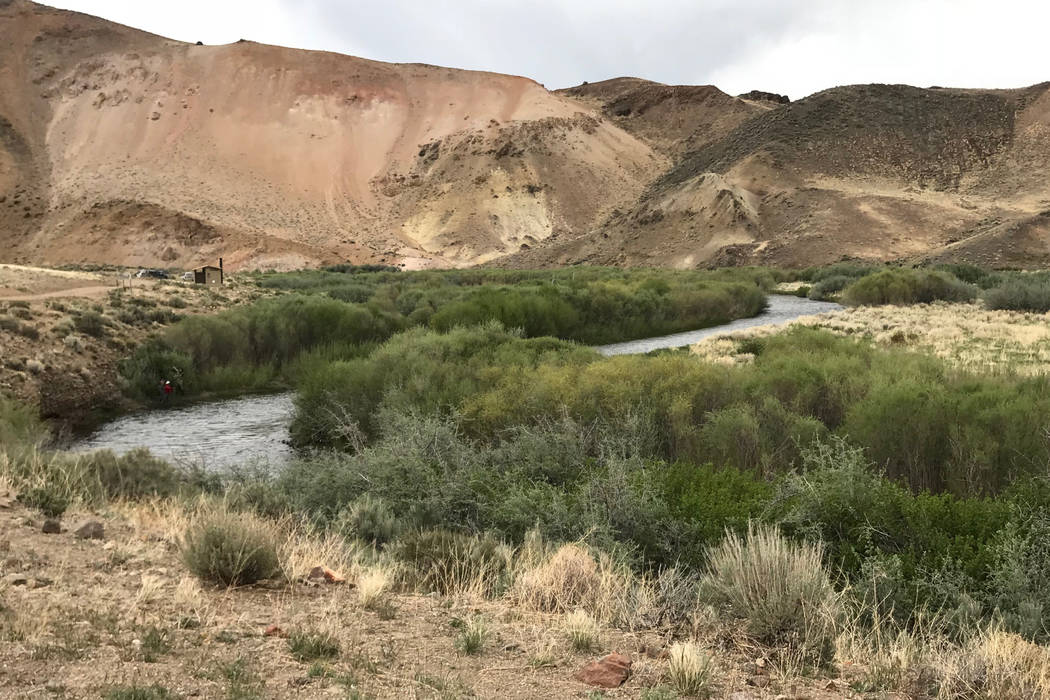Don’t forget to protect yourself from mosquitoes


During a recent campout along the East Walker River southeast of Reno, I shared the early-morning hours with a rather ambitious bunch of mosquitoes. Despite my efforts to keep them at bay, the sneaky little critters still managed to demonstrate just how tenacious they could be and found a way through my defenses.
Naturally, the places where they chose to take blood samples are the most challenging to scratch. My problem is that I am just as tenacious with my scratching as the ornery mosquitoes are about collecting blood, and I am quickly reminded just how thin that first layer of skin really is.
During one of my rather persistent scratching sessions, I happened upon an email from the Centers for Disease Control with a rather worrisome subject line that read, “Illnesses from mosquito, tick and flea bites increasing in the U.S.”
According to the news release within the email, “Illnesses from mosquito, tick and flea bites have tripled in the U.S., with more than 640,000 cases reported during the 13 years from 2004 through 2016.”
Then, if that wasn’t enough to get the attention of anyone who spends time outdoors, the next line read, “Nine new germs spread by mosquitoes and ticks were discovered or introduced into the United States during this time.”
Included in the list of new diseases confronting outdoor enthusiasts are West Nile, Lyme, Zika and something called chikungunya. I’ve never heard of the last one, but the name is certainly sufficient to get one’s attention.
Fortunately, when it comes to disease cases from mosquito and tick bites, Nevada is at the bottom of the list in both categories. Probably because the state is so dry, but some of our neighboring states aren’t so lucky. California and Arizona are in the top 20 percent of states reporting mosquito-borne illness cases, and in the third and fourth of five possible tiers for tick-borne cases. Utah and Idaho are in that fourth tier.
While this isn’t necessarily good news for outdoor enthusiasts, it is good information to know. And because we stand a good chance of running into a tenacious bunch of mosquitoes or getting closer to a tick than we would prefer, it’s a good idea to know how we can minimize the chances of being bitten.
During my game warden days, I was checking duck hunters at Sunnyside one fall when the mosquitoes were so bad that a frustrated hunter was offering $100 to anyone who would sell him a can of insect repellent. As you might imagine, folks weren’t in a selling mood.
As it turns out, the man was on the right track in his search for insect repellent. The Southern Nevada Health District and the CDC recommend the use of repellents to minimize the chance of being bitten by mosquitoes. Look for repellents containing DEET, Picaridin or oil of lemon eucalyptus. Then be sure to follow the directions on the product label.
Repellents using DEET are easy to find. One of the things to look for is the concentration of DEET in the product. The higher the concentration, the longer the protection. A study referenced by the SNHD found that a product containing 23.8 percent DEET provided an average of five hours of protection and a product with 6.65 percent DEET provided almost two hours of protection.
Be sure to assist young children with the application of any repellents. My mother used to put it on her hands and then rub it on us. Avoid their eyes, mouth and hands. They could put their hands in the mouth. For infants, use mosquito netting rather than repellents.
Clothing also can help to repel insects. Shorts are fashionable, but do little in the protection department. Wear long pants and shirts with long sleeves. You also can apply repellent to the fabric to help prevent sneaky mosquitoes from reaching you that way.
Freelance writer Doug Nielsen is a conservation educator for the Nevada Department of Wildlife. His “In the Outdoors” column, published Thursday in the Las Vegas Review-Journal, is not affiliated with or endorsed by the NDOW. Any opinions are his own. Find him on Facebook at @dougwritesoutdoors. He can be reached at intheoutdoorslv@gmail.com.












